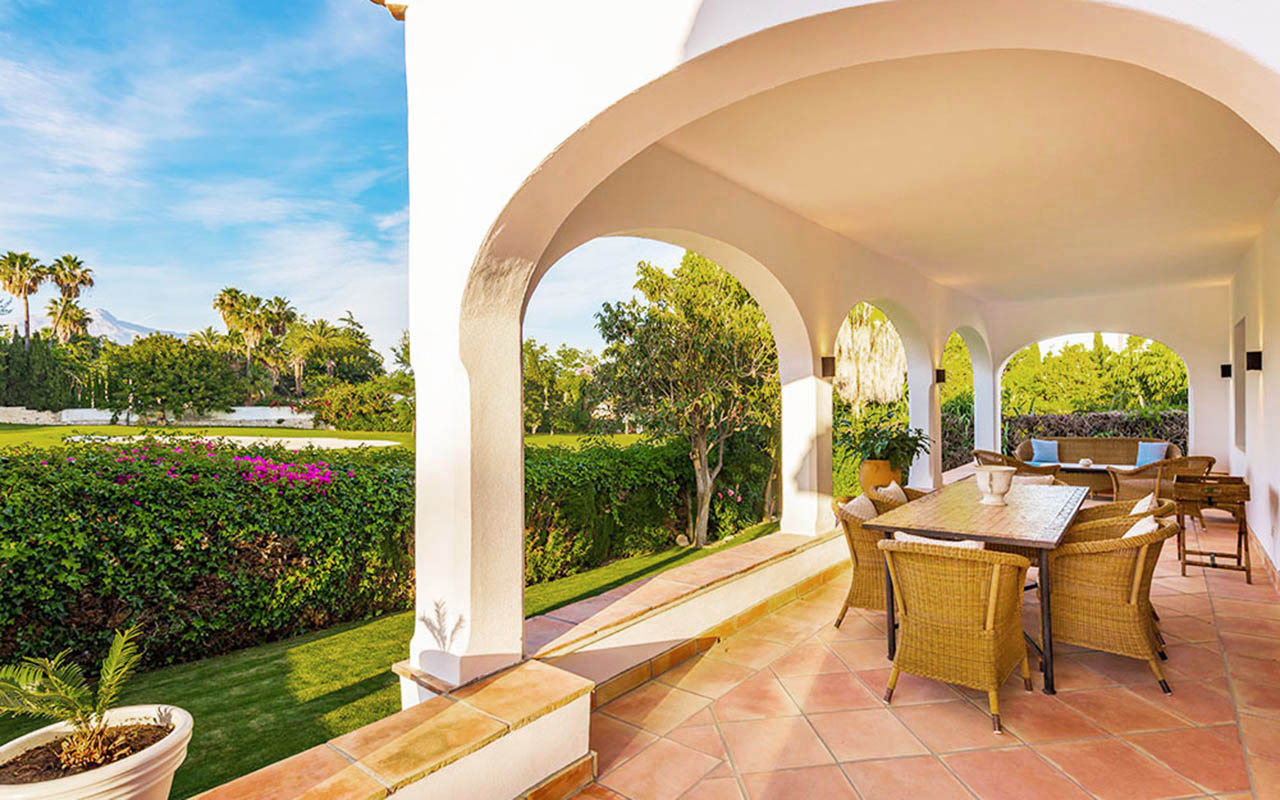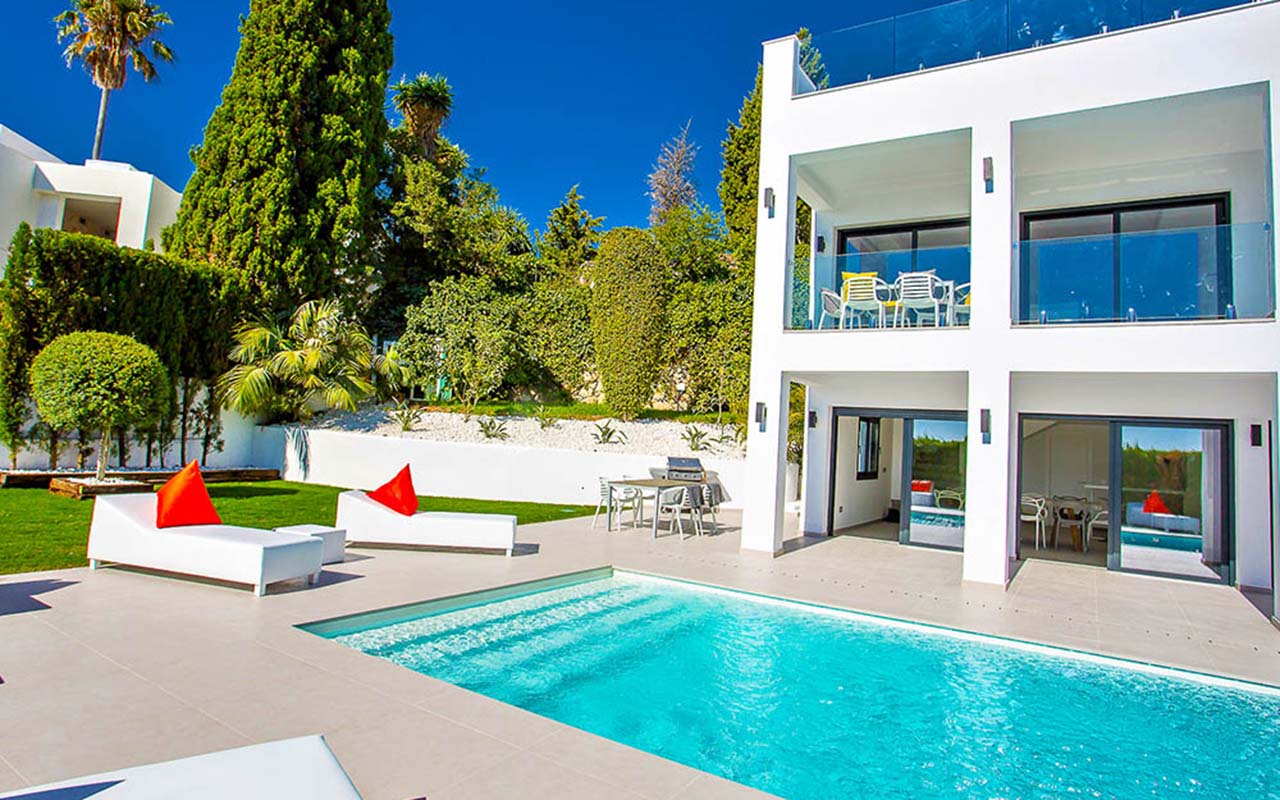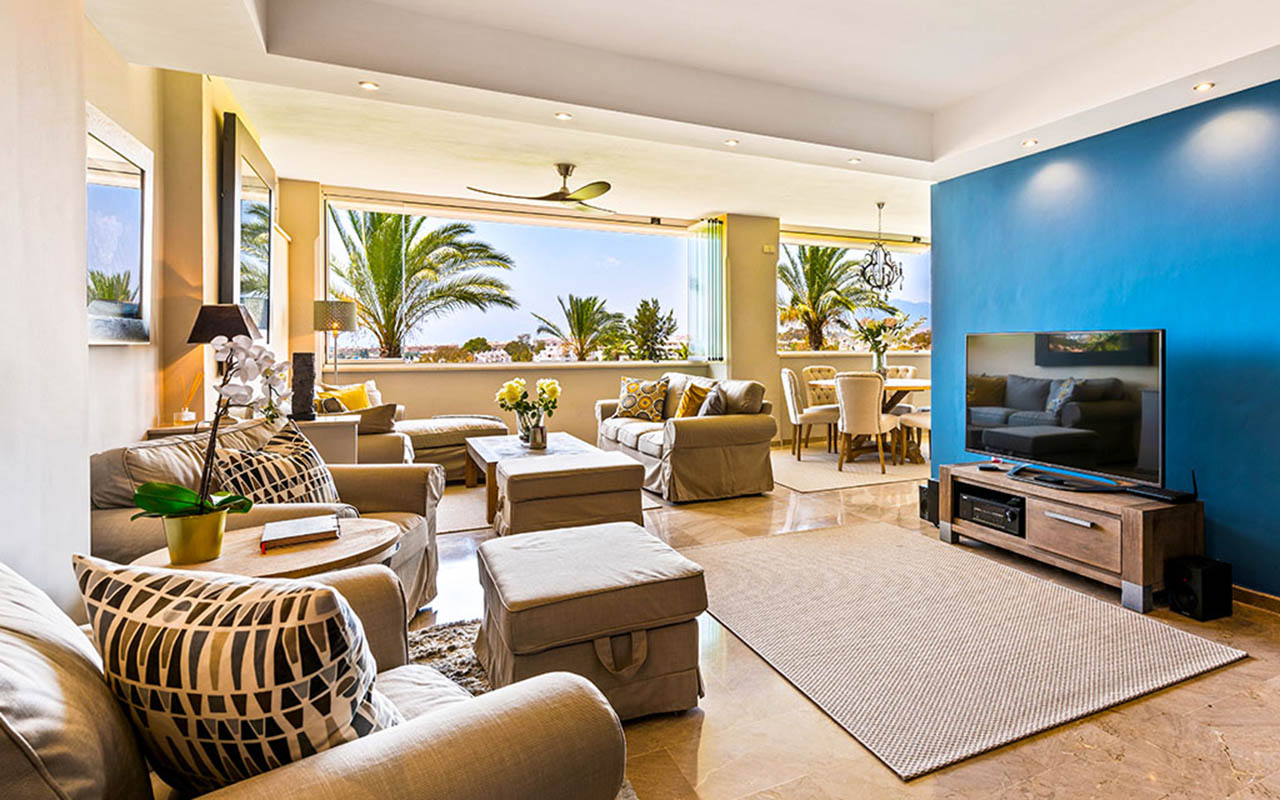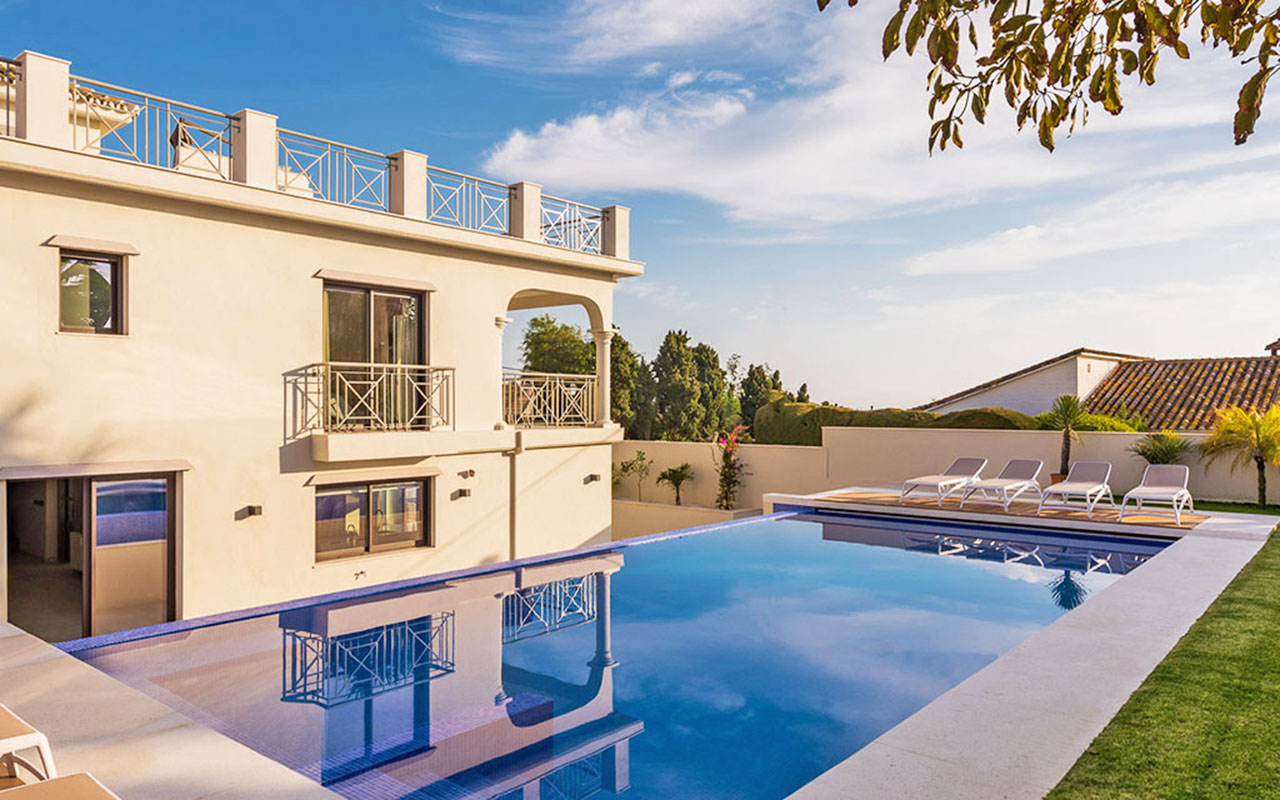Buying property in Spain
Spain offers a wonderful combination of natural beauty, modern and traditional culture and fantastic weather. Combine that with lower property and living expenses than much of northern Europe, and there´s no surprise that so many expats choose to buy or live in Spain.
ProMas builders, based in Marbella, provide quality design, building and construction services around the Costa del Sol. The part of the coast between Mijas, Alhaurín el Grande, La Quinta, Benahavís and Nueva Andalucía are examples of some of Spain´s fantastic areas.
Since buying as a foreigner can seem daunting, ProMas have put together this overview of buying property in Spain. We also cover the options of building from scratch or reforming, so read on if you´d like our expertise!
Where to start?
Idealista is the most common real estate website here in Spain. However, the market can be traditional and many of the best deals are only accessible through local estate agents (inmobiliarias). This has the added bonus of getting all the local expertise and having someone guide you through the whole process. Although the seller usually pays 5% commission plus 21% IVA on the sale price, it allows you to get hours of specialised help at no expense to the buyer, so it´s worth it to be guided by their experience.
Once you have an offer accepted on a property, a lawyer should perform due diligence and prepare a purchase contract. Contracts can be created in two languages, Spanish and the language of the leading lawyer´s client. As a guide, the exchange usually takes place in the notary office, about 2-3 months after agreeing on a sale price. Usually both clients and lawyers will be present, although power of attorney could be given to a lawyer if needed. If you get a local loan, you need about 30% of the purchase price upfront. This includes a deposit of around 20%, plus 5% agency fee and another 5% for taxes and lawyer fees.

Buy new, refurbish or build from scratch?
Although Andalusia has the highest population in Spain, it is also the largest state and with lots of untouched land. So, like in most of Spain, you can choose to build from scratch or refurbish an existing property. Although vacant blocks are usually further out from the beaches or town centres.
There are many wonderful developments being built, but you really pay a premium price for luxury new builds. Homes in new developments cost significantly more than their older counterparts, even with refurbishment costs considered. Although prices are lower if you buy off the plan (before being built), this also entails a high level of risk. For example, quality and completion dates are uncertain and you even face the possibility that the developer could go bankrupt. So, any off the plan contract should be carefully considered with reliable lawyers.
Clearly, the more economic option is to buy and either refurbish or build your dream home how you´d like it.
This sounds more stressful, but doesn´t need to be. There are many building companies, like ProMas, that can manage the whole project from idea to completion with maximum expertise. We break down the options further below.
Reforming an existing home
There are many traditional homes just waiting to be renovated here in Spain. One benefit of refurbishing an older home is not having to go through such an extensive council (ayuntamiento) approval process.
Of course, older properties are often closer to the action, and have more developed locales and general amenities. They also often have luscious developed gardens that you can take advantage of. So, buying and refurbishing is a great option!
Luckily, here at ProMas we know exactly how to help you with the refurbishing your home here on the Costa del Sol. Our very experienced team of builders, designers, and tradesman can turn the most basic home into a modern paradise. We even have great working relationships with reliable architects that provide wonderful designs and fasten the council approval process.
To do refurbishments here in Spain there are three kinds of permits that you could require. A licensia comunicada is for the most minor of works, which allows you to start work without waiting. Then an obra menor for minor changes to layouts walls and thirdly, obra mayor for more involved refurbishments. Consult a local professional to determine which you would need to apply for and the timeframes you should expect. These vary with the complexity of the project, the architect´s local expertise and the particular council. Ofcourse, builders like ProMas have local expertise and can provide all this information and options to simplify this process.
We explain the process for buying and building or refurbishing below. The refurbishment process is obviously much quicker for the design, approval and building elements. Many refurbishments can be completed within 6-9 months from purchase, possibly less if you don´t need to wait for permits.

Complete new build
If you have more time, building a home from scratch (new build) can also be a brilliant option. A key benefit of this is that you can often find a larger plot. This would give you the option of a larger house or rural property containing a sustainable garden or vegetable patch. Of course, the main benefit is that you can build your dream home without constraints of an existing building.
However, building from scratch is surely the most involved of the options. Once you have purchased the property you could engage a project manager who will contract architects and builders etc. Otherwise you could engage architects, builders, designers and other technicians yourself. Obviously, finding contractors yourself is a time-consuming option that may not result in the best value for money. The easiest option in this regard is a `turnkey` project (llave en mano), where the clients sets the parameters, and the project manager organises everything.
Here at ProMas, we are not just builders. We are also designers, planners and project managers who offer amazing turnkey build options for our clients. It´s completely up to you in which capacity you engage us, anywhere from quality builders to full project managers. Even with our turnkey projects, you can be exactly as involved in the decisions and process as you´d like.
You will likely find a quality building company that provides these options in other parts of Spain too. Once you build networks in the area it is easier to determine which companies are reliable.
Choosing your land
Although, it is harder to find empty plots closer to the beach and services, they still can be found. However, on the Costa del Sol, the higher you are up the mountains means the more stunning the view.
When looking at which plot to buy you should speak with an architect, council or planner to work out which would suit your needs. The urban planning regulation of the council will specify what and how much you can build on each plot. The floor space ratio (FSR) is the total constructed area allowed as a percentage of the land. The FSR is usually around 25%, where terraces, balconies and garages will usually be counted at a lower rate. The occupancy rate, which is the total building footprint allowed as a percentage of the plot, is normally about 15%. Finally, the total height allowed is usually 2-3 storeys for villas. It is important to talk with a specialist about the restrictions of the plot that you are considering buying.

Building Process
If you are building from scratch it is handy to know some basics to estimate your timelines and your cost. Below is an overview of the building process and essential expenses.
- Find agent, property and agree on a price. This could take weeks or months, depending on your time commitment and willingness to wait for a good deal.
- Engage a lawyer to create a purchase contract, complete due diligence and organise the signing and exchange. It is usually around 2-3 months from the offer acceptance to exchange, which happens at the notary office (notario), with both parties and lawyers present.
- Engage project manager, or architect. If you don´t contract a project manager then you will have to engage an architect and tradesman and consultants yourself.
- Architect develops basic project and submits to council for approval. It usually takes 2 months to design a normal villa, plus another 3 months to 2 years to get the approval. Some councils are faster than others, but having an experienced local architect helps get the project through quicker.
- Architect develops the execution project, which usually takes another 2-3 months.
- Construction of a villa would normally take around 12 months. File for your first occupancy certificate about 2 months before final completion, so that it´s ready at the same time. You would usually be looking at the interior design during this process too.
Overall, you should allow at least 2-3 years from when you find your land until your home is ready.
The biggest variation depends on the time council takes to approve permits, and the efficiency of the architect and builder. Although some councils are notoriously slow, it depends on the architect in presenting a project that the council will approve. As such, a quality architect is key to efficiency in designing and managing the construction to completion. Similarly, finding and engaging efficient builders that will achieve quality finishes within your timeframes is another key factor.
All the more reason to work with us at ProMas. Our reputation, quality, contacts and local knowledge proceed us.
Building costs and taxes
Building costs vary from about 1,000 to 2,700 euros per square metre of constructed home, depending on the quality. This figure is less for terraces, basements, garages and balconies.
Your building costs are the key to calculating all the additional costs and taxes associated with the build. Firstly, you need to factor in that permits, ICIO and taxes will cost around 6-7% of the construction cost. Secondly, architect fees will be around 4-7% of construction cost, plus another 1.5-3% for the technical architect. Another obligatory cost is the Health and Safety coordinator, which is about 0.3% of construction costs. In practice, you will probably need a Geotech and landscape surveyor which is an additional 5-10,000 euros.
Therefore, in total you should factor in an additional 15-20% of the construction cost for essential taxes and contractors. This would be higher if you need further consultants like an interior designer or landscape architect, for example. Finally, it is always wise to add an additional 2-3% contingency amount to allow for something spilling over.

Buying property in the Costa del Sol
If you are thinking of buying a home in the Costa del Sol, now is a good time to get serious!
Our advice is to get in touch with a well-regarded real estate and start browsing. Agents can advise what is within your budget and help you through the process with their local knowledge and contacts.
If you need an experienced builder around Marbella or the Costa del Sol, our committed team of professionals would be delighted to help. We provide high quality building and construction services from Fuengirola to Estepona and inland within these areas. We create 3D designs to visualise your home before construction starts and strive to provide first class service and finishes.
For any questions or comments, simply email us at enquiry@promasbuilding.com or call us on +34 951 497 619.
